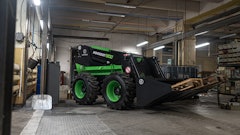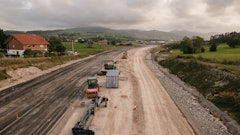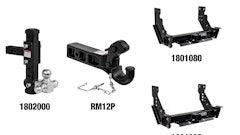It hardly seems possible that another CONEXPO-CON/AGG show has come and gone. Held every three years, the much-anticipated event arrived to great fanfare, yet seemed to be over in a heartbeat. Thankfully, it left behind a whole slew of new product introductions, including some truly innovative and forward-thinking technology. You can find many of these products highlighted throughout this issue.
With the show now a memory, it's a good time to reflect on some of the major concepts manufacturers chose to focus on in their exhibits and presentations. The one that intrigued me most was the emphasis on environmental consciousness on the jobsite.
Emphasis on the environment is nothing new, of course. After all, the "green" movement has long been a driving force behind emissions and other regulations impacting this industry. Yet, where manufacturers once grudgingly complied with such legislation, they are now at the forefront of technology centered around improving productivity, while minimizing their equipment's environmental impact.
Ironically, the investments companies were forced to make in engine and equipment designs to accommodate strict emissions regulations have produced significant gains in other areas. While no one can yet know the implications for Interim Tier IV and beyond, in many cases, Tier III has actually resulted in improved fuel economy, enhanced machine performance, improved service and diagnostics capabilities and other unanticipated, yet welcome benefits.
And while they've received some negative press lately, oil companies can be thanked for contributing to reduced fossil fuel consumption on many construction sites. Environmentally friendly fluids have been around for some time. Yet, other oil and grease formulations are now making a difference. Extended-life oils, greases and coolants are enabling equipment manufacturers to extend required service intervals, meaning less fluid used and reduced hazardous waste that requires disposal.
Yet, being environmentally conscious goes beyond equipment and fluid technology. It extends to the practices used on the jobsite. These can include dust and erosion control policies, stormwater control practices and even what and how equipment is used. For example, using newer, low-emission/fuel-efficient equipment; optimizing site layouts to reduce haul distances and/or cycle times; or shortening idling times for machines not in use can all reduce annual fuel usage, while reducing emissions output. With fuel prices the way they are, that's a win-win situation.
You don't have to set out to "go green" on your projects in order to make a difference. It really comes down to investigating and using equipment and practices that can maximize operational efficiency. Not only will you lower operating costs and enhance profitability, you can potentially achieve more ecologically friendly jobsites. All in all, not a bad package to "sell" to the public and to potential customers.
The drive to develop environmentally sound construction practices is here to stay. As such, we'll be examining equipment technology and processes in the coming months that can help your business stay profitable, while keeping things lean, mean and, ultimately, green.


























